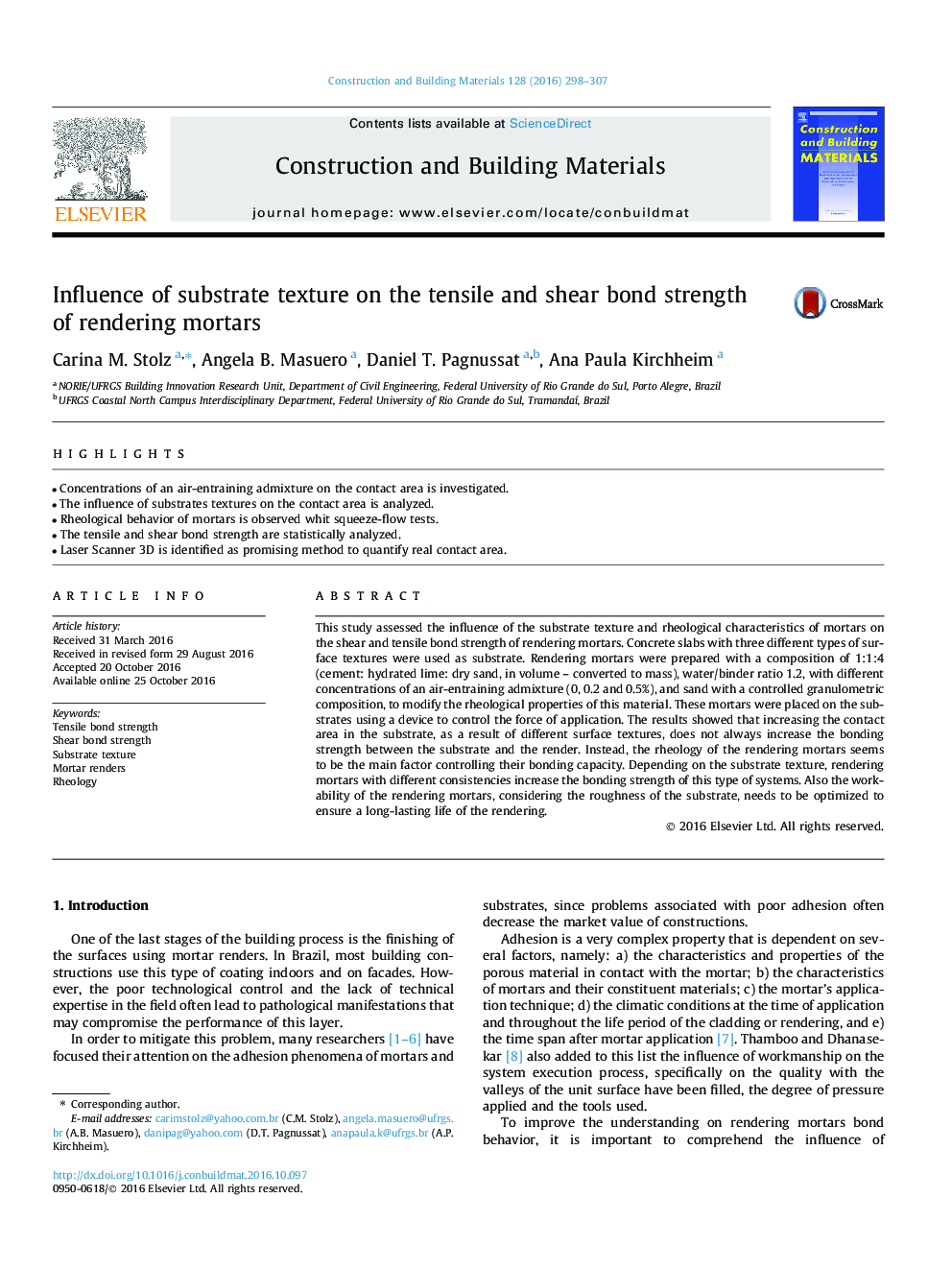| Article ID | Journal | Published Year | Pages | File Type |
|---|---|---|---|---|
| 4914044 | Construction and Building Materials | 2016 | 10 Pages |
Abstract
This study assessed the influence of the substrate texture and rheological characteristics of mortars on the shear and tensile bond strength of rendering mortars. Concrete slabs with three different types of surface textures were used as substrate. Rendering mortars were prepared with a composition of 1:1:4 (cement: hydrated lime: dry sand, in volume - converted to mass), water/binder ratio 1.2, with different concentrations of an air-entraining admixture (0, 0.2 and 0.5%), and sand with a controlled granulometric composition, to modify the rheological properties of this material. These mortars were placed on the substrates using a device to control the force of application. The results showed that increasing the contact area in the substrate, as a result of different surface textures, does not always increase the bonding strength between the substrate and the render. Instead, the rheology of the rendering mortars seems to be the main factor controlling their bonding capacity. Depending on the substrate texture, rendering mortars with different consistencies increase the bonding strength of this type of systems. Also the workability of the rendering mortars, considering the roughness of the substrate, needs to be optimized to ensure a long-lasting life of the rendering.
Related Topics
Physical Sciences and Engineering
Engineering
Civil and Structural Engineering
Authors
Carina M. Stolz, Angela B. Masuero, Daniel T. Pagnussat, Ana Paula Kirchheim,
